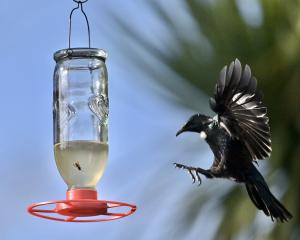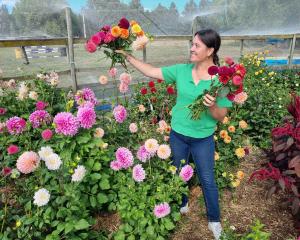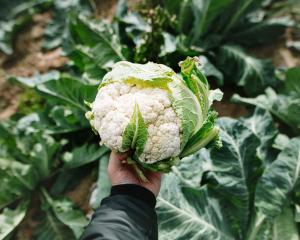Growing from seed is less expensive than buying plants ready to go into the ground.
Even cheaper is saving your own seed. In autumn, ripe seed can be gathered on a dry day and either sown at once or stored in paper bags (never plastic) for spring sowing.
Be aware, though, that not everything saved can be guaranteed to be exactly like the plant from which the seed is taken.
A Milton gardener related how he saved seed last year from a large-fruited tomato, not thinking about the fact that he had grown Sweet 100 nearby. The bees, he explained ruefully, buzzed between the two varieties and the seed he saved produced small to medium-sized tomatoes, not the large Beefsteak he expected.
There was a positive side to his story. The hybrid plants have masses of fruit, a characteristic of Sweet 100.
If you grow a single variety of tomato and want to save seed, check it is not an F1 hybrid, as it is unlikely to breed true. Heritage tomatoes (Bloody Butcher, Black From Tula, Brandywine, Grosse Lisse, Tigerella) are a better bet.
The same is true for most vegetables, including courgettes, celery, peas, broad beans and runner beans. Carrots, parsnips and lettuce are so cheap to grow from seed it is scarcely worth the effort.
For example, Egmont Seeds' Manchester Table and Topweight carrots are $2 for a packet of approximately 1500 seeds, which is less than 0.14c a carrot. However, the adventurous may want to give them a try.
Not recommended is keeping seed of brassicas (cabbage, cauliflower, broccoli and Brussels sprouts), as they cross freely with one another, being in essence selected forms of one plant, Brassica oleracea.
Most herbs are good sources of seed, particularly thyme, parsley and sage, while the ripe fruit of the bay tree - which looks a bit like olives - is another easy herb.
In the flower garden, the choice is extensive.
Among those worth saving are the seeds of hollyhocks, sweet peas, autumn cyclamen (Cyclamen hederifolium), marigolds (Tagetes and Calendula), nasturtiums, poppies, dahlias and nerines.
Trees and shrubs take longer to show their true colours when grown from seed.
Magnolias can take 15 years from seed to flowering tree, so you may prefer to try roses, which flower within months if you sow seeds before winter; or native hebes and kaka beak (Clianthus).
And, who knows, you may strike it lucky and come up with a completely new variety worthy of commercial growers' attention. Start from seed ...












